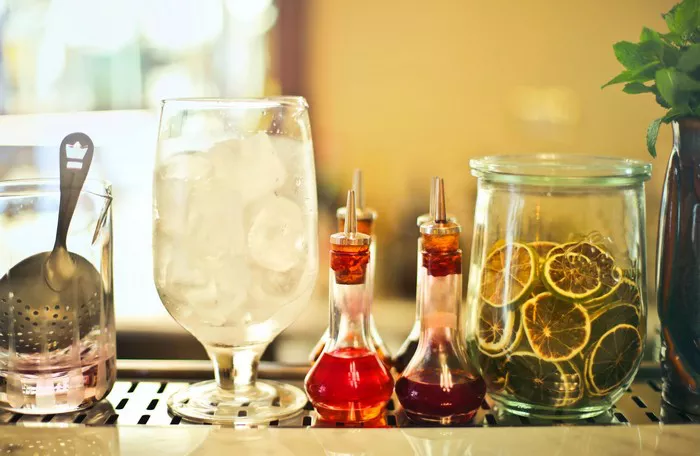Sangria, with its refreshing blend of wine, fruits, and spirits, has long been a favorite beverage choice, especially during warm weather or festive occasions. Among its key ingredients, brandy plays a crucial role in adding depth and complexity to this beloved Spanish concoction. However, determining the ideal amount of brandy to incorporate can be a matter of personal taste and the desired flavor profile of the sangria. Understanding the role of brandy in sangria and exploring various recipes can help in crafting the perfect balance for this delightful beverage.
The Role of Brandy in Sangria
Brandy, a spirit distilled from wine or fermented fruit juice, contributes to the complexity and richness of sangria. Traditionally made with red wine, sangria derives its character from the infusion of various fruits, sweeteners, and often a splash of brandy. The addition of brandy not only elevates the alcohol content but also imparts nuanced flavors that complement the wine and fruit components.
When pondering how much brandy to include in sangria, it’s essential to consider the overall flavor profile one wishes to achieve. Brandies possess diverse flavors, ranging from fruity and floral to nutty or spiced, which can significantly influence the final taste of the sangria. Factors such as the brandy’s quality, the sweetness of other ingredients, and personal preference all play a role in determining the quantity of brandy to use.
Factors Influencing Brandy Quantity in Sangria
Type and Quality of Brandy:
The type and quality of brandy utilized greatly impact the sangria’s taste. Higher quality brandies, often aged and possessing nuanced flavors, may require a smaller quantity to make their presence known in the beverage. Conversely, less complex or younger brandies might necessitate a slightly larger quantity to impart noticeable flavors.
Wine Variety and Flavor Intensity:
The choice of wine in sangria influences how the brandy interacts with the base. A robust red wine might accommodate a more generous amount of brandy, whereas a lighter white or rosé wine may call for a lighter touch to maintain balance without overpowering the other flavors.
Sweetness Level and Fruit Selection:
The sweetness of the sangria largely depends on the added sweeteners and fruits. Sweeter fruits and additional sugars might require a reduction in the brandy quantity to prevent an overly sweet or boozy drink. Tart or citrusy fruits, on the other hand, could harmonize well with a more pronounced brandy presence.
Personal Preference:
Ultimately, personal taste preferences guide the amount of brandy in sangria. Some individuals prefer a stronger alcoholic kick and might opt for a larger proportion of brandy, while others seek a more subtle touch to enhance the overall flavor without dominating the drink.
Recipe Variations and Brandy Ratios
Numerous sangria recipes abound, each offering a unique take on this classic beverage. The diversity in these recipes allows for experimentation with brandy proportions to suit individual preferences. Here are a few variations showcasing different approaches to the quantity of brandy used:
Classic Red Wine Sangria:
A classic red wine sangria often calls for a moderate amount of brandy to complement the rich flavors of the red wine and fruit. Typically, a recipe might suggest adding anywhere from ½ cup to 1 cup of brandy for a standard pitcher, which usually contains a bottle of wine and various fruit slices.
White Wine Sangria:
In contrast to red wine sangria, white wine versions might necessitate a lighter touch of brandy. For a pitcher of white wine sangria, recipes often recommend using around ¼ to ½ cup of brandy to maintain a delicate balance of flavors.
Fruit-Forward Sangria with Citrus Emphasis:
Sangria recipes heavily featuring citrus fruits such as oranges, lemons, and limes could tolerate a slightly higher amount of brandy, around ¾ to 1 cup, as the citrus flavors can harmonize well with a more robust brandy presence.
Customized Sangria Creations:
Individuals can tailor sangria to their liking by adjusting the brandy quantity based on personal taste preferences. Start conservatively with smaller amounts and gradually increase to achieve the desired flavor profile.
Tips for Finding the Perfect Brandy Quantity
Experimentation is key to discovering the ideal amount of brandy in sangria. However, several tips can guide this process:
Start with Small Additions:
Begin by adding smaller quantities of brandy, allowing the flavors to meld before deciding to add more. This gradual approach prevents overpowering the sangria with the brandy’s intensity.
Taste and Adjust:
Continuously taste the sangria as you add brandy to gauge its impact on the overall flavor. Adjustments can be made by adding more brandy if it seems faint or diluting with additional wine or fruit juices if the brandy becomes overpowering.
Consider the Serving Time:
The flavors in sangria tend to meld and develop over time. Allow the sangria to sit for a few hours or overnight before serving, as this allows the fruits, wine, and brandy to integrate fully for a harmonious blend.
Note Personal Preferences:
Take note of personal preferences and guest preferences if serving to others. Some individuals might prefer a more potent sangria, while others may favor a subtler touch of brandy.
Conclusion
Determining the optimal amount of brandy in sangria involves a blend of experimentation, consideration of ingredients, and personal taste preferences. The versatility of sangria allows for flexibility in adjusting the brandy quantity, making it an adaptable beverage that caters to various palates and occasions. By understanding the role of brandy and considering different recipe variations, individuals can confidently craft a delightful sangria tailored to their liking, whether favoring a subtle hint or a more pronounced brandy presence in this beloved Spanish libation.


